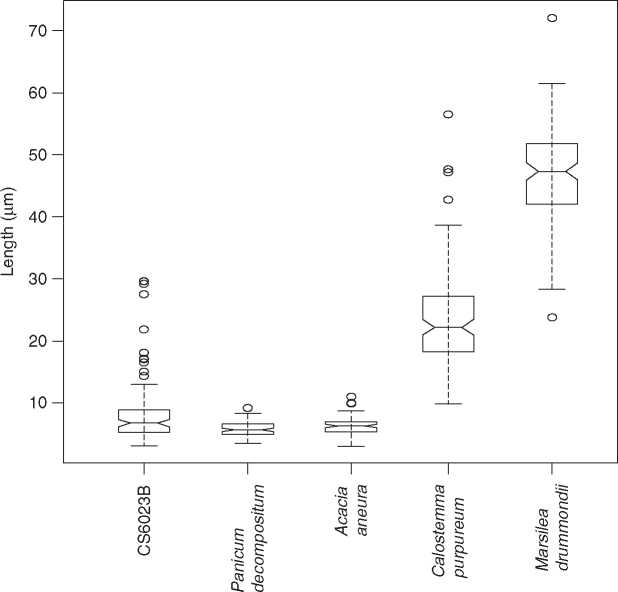Starch granules exhibit a diverse array of morphological characteristics. Granules vary in size from just a few microns in maximum dimension up to at least 100 mm in a few instances (e. g., Figures 2c-2f). While some starch granules have a very distinctive size and shape, the majority require consideration of a range of additional features before they can be securely identified. When dealing with largely variable archaeological starch assemblages, a useful initial characterization involves an analysis of maximum dimensions within a statistically significant sample, usually >100 granules for comparative reference samples and >30 granules from an extracted archaeological residue (Figure 3).
Other important morphological features in the identification of starches are whether the granules are compound or simple in form, the presence or

Figure 3 Box plot plus outliers of maximum dimensions of selected reference material presented with the range of starch granule sizes from an archaeological grinding stone (CS6023) from the semi-arid zone site of Cuddie Springs in southeastern Australia (>100 granules measured). Most grains from this tool fall within the range of Poaceae and Acacia. The extraction contained granules that were compound grains typical of grasses (as opposed to Acacia, which have simple granules). Furthermore, phytoliths typical of grasses were abundant in the same sample and wear traces on the stone surface were consistent with highly siliceous (cf. grasses) contact material. Illustration: Braddon Lance.
Absence of lamellae, granule shape (defined in terms of standard botanical descriptors); fissures at the hilum, eccentricity of the hilum, and granule faceting. It should be noted that the shape of the extinction cross is not an accurate descriptor, as its shape changes depending on the orientation of the granule under polarized light (see Figures 2a and 2b).




 World History
World History









